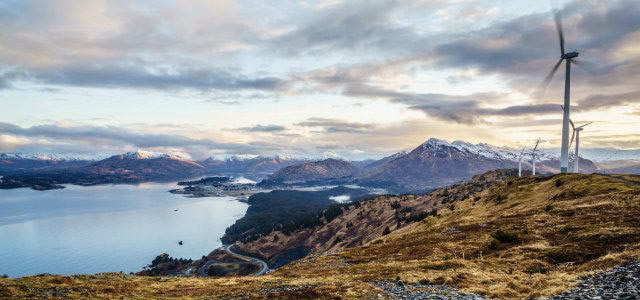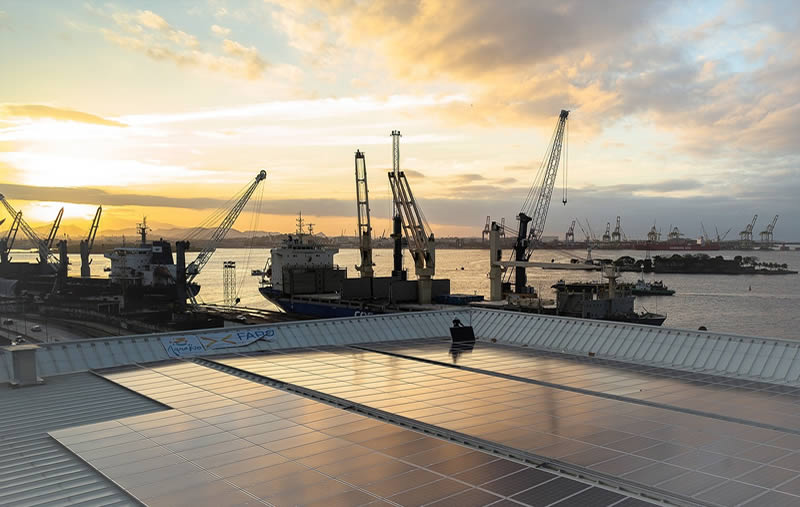As concern about climate change becomes more acute, announcements of goals for 100% renewable within the next few decades are becoming more and more common. We can learn a lot about what it will take to accomplish this by looking at examples of where it has already been done. Some places like Iceland can get there because they have particularly good hydro or geothermal resources. The question for the rest of the world is how to get there with solar, wind and batteries. Let’s look at some examples. The place to start is off-grid or island grids because they have the highest cost of energy and have moved to renewables fastest. Also, it doesn’t take as much new construction to get to 100% renewables on a smaller system. Finally, this blog post will focus on the technical challenges, which are easier to deal with on smaller systems.
Kodiak Island, Alaska is 97% renewable. They have a hydro resource, but by itself, the hydro resource is not big enough, so they added a wind farm. Without going into the technical details about how these two resources complement each other, this is one strategy for getting very near to 100% renewable.

Tokelau is a small island in the Pacific and one of many small islands that have gone 97% renewable. They did it with a very large battery. We developed the HOMER model at NREL over 25 years ago to investigate trade-offs such as this one between the cost of batteries and their benefits, such as fuel use reduction.
Batteries can save a lot of fuel if they are cycled frequently but sizing a battery to handle the worst combination of a couple of days in a row that are both cloudy and have high loads means that last increment of battery investment may only be used once a year. In other words, a little consumption of fuel saves a lot of battery costs. Biofuels could be that backup resource to get us from 90% to 100%. It doesn’t seem possible for biofuels to replace all our current fossil fuel consumption, but they could provide that critical last step once the demand for fuels is dramatically reduced by solar and wind.
There are examples of truly 100% renewable systems all over the developing world. They are called Solar Home Systems (SHS). They consist of a single photovoltaic panel and a single battery. SHS are revolutionizing rural areas in developing countries that have never had reliable power. Larger standalone systems are now available so a health clinic or truly functioning school can have modern communications and healthy lighting. Backup generators in these sizes are impractical, so people who have SHS understand that on cloudy days they will have fewer hours of light in the evening.

Load management is critical in getting close to 100% renewable
Getting to extremely high penetrations of renewable power in the developed world will require scaling up load management as well. There are many things that we use electricity for whose timing we can be flexible about. As it turns out, most of the largest domestic loads involve heating in some way. These are the easiest loads to manage. The electronic loads like your television and LED lighting are not appropriate for this kind of flexibility, but they are also very modest loads. There is clearly a lot of potential for load management and many utilities are starting to implement demand response programs to manage loads.
Net zero is not the same as 100% renewable
In an interconnected system like most developed countries, some entities can get 100% of their power from solar and wind and let other parts of the system provide the backup. This is the concept behind net zero. They export solar and wind power when they have excess and import fossil-generated backup power when they need it. This has been very helpful in expanding the use of renewables and reducing carbon emissions, but it is very different from a true 100% solution that doesn’t rely on other parts of the system for backup.
Another reason that 100% renewable is more feasible for smaller systems has to do with power electronics. Photovoltaic panels produce direct current (DC). They require inverters to convert to alternating current (AC) for distributing that power. Modern wind turbines also have inverters built into them. Utilities can create a stable AC grid because conventional generators rotate at a stable speed with a lot of inertia. Inverters with batteries can create synthetic inertia, which is a new concept. The large inverters used by wind turbines and utility-scale solar farms take advantage of this stable AC grid and cannot operate without that grid. The smaller inverters used in microgrids are grid-forming inverters that can operate on their own. They are only available up to about 1 MW in size and cost a bit more.
These issues about power electronics are quite technical, but a big part of the reason that we can’t get to 100% right away. I’m confident that in time, grid-forming inverters will become available in larger sizes and their control algorithms for synthetic inertia will continue to improve. In the meantime, the path to high renewable penetrations is through microgrids which also have other benefits, such as resilience.
Why is so little progress happening at reducing carbon emissions? It is because the deniers keep harping on how expensive it will be. The most expensive part, by far, of getting to 100% is the last 10% or so. Meanwhile, there are many ways to cut carbon emissions that are not expensive, but we are not doing them because we are in the middle of an all-or-nothing debate. At HOMER Energy we are focusing on what can be done now. Many places going to 80% renewable will reduce carbon emissions faster than a few places going to 100%. This is true not just for the technical reasons described above, but also because cost-effective solutions can be rolled out more universally. We aren’t going to solve the climate change problem by relying on philanthropy alone.

Working on big power users are obvious choice. But how about the senior living situations. Mobile home parks, 55+ residence. Many could easily use an electric vehicle for most all their needs. They could also use solar with battery backup for health and safety reasons. And they do add up. Many today, and many more in the future.
Permits for these homes are very difficult and too expensive. Should be bills to expedite and fund such programs.
Solar for seniors.
Thank you for these comments Eric. Solar for seniors is an interesting perspective.
Sincerely,
Lili Francklyn
Thank you Peter for this instructive and inspiring article. I fully agree with your pragmatic conclusions on climate mitigation and grid resilience, and I’m interested to discover about synthetic inertia.
Thank you Matthieu. Let us know what you find out about synthetic inertia on the grid.
All the best,
Lili Francklyn